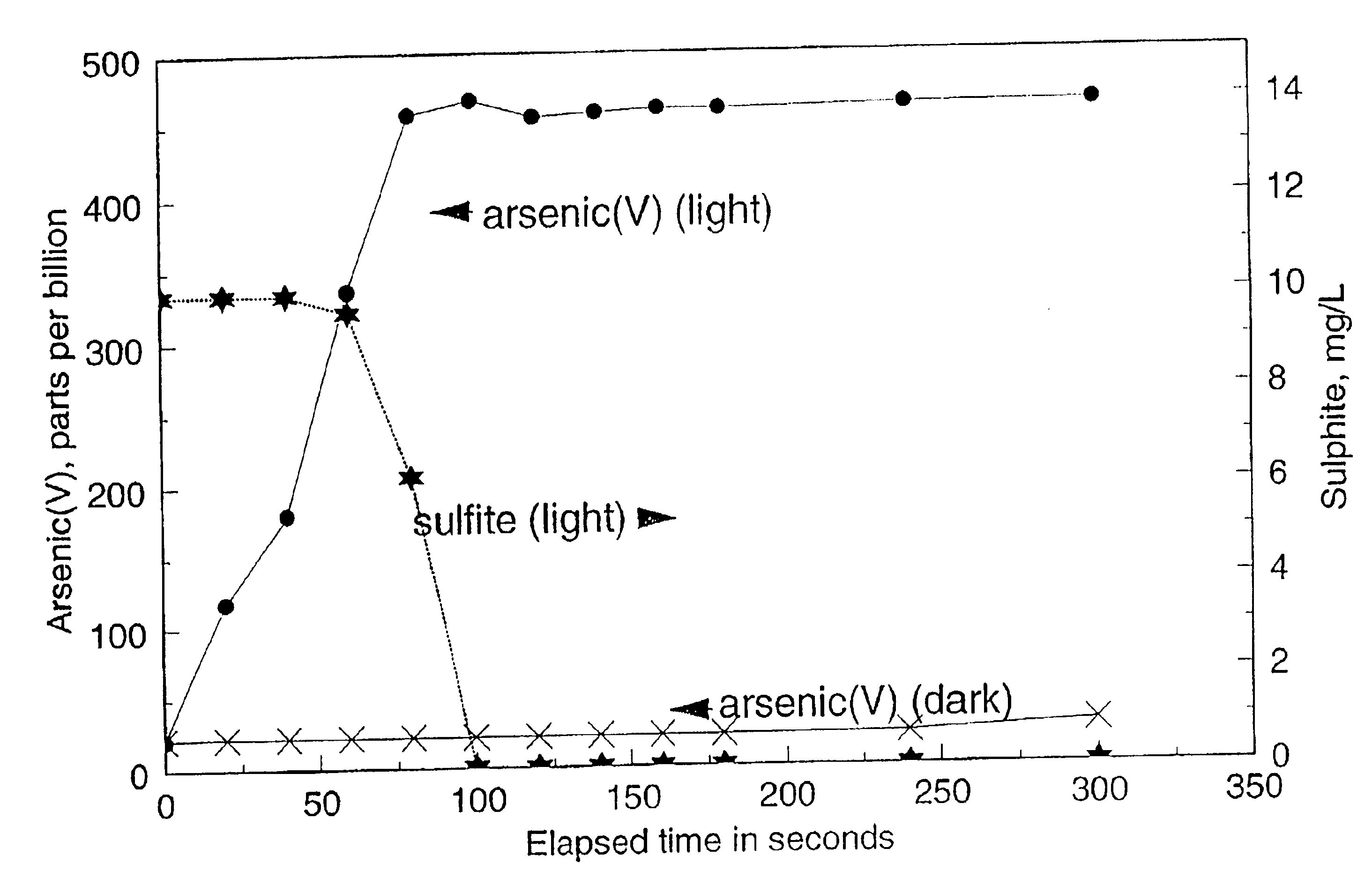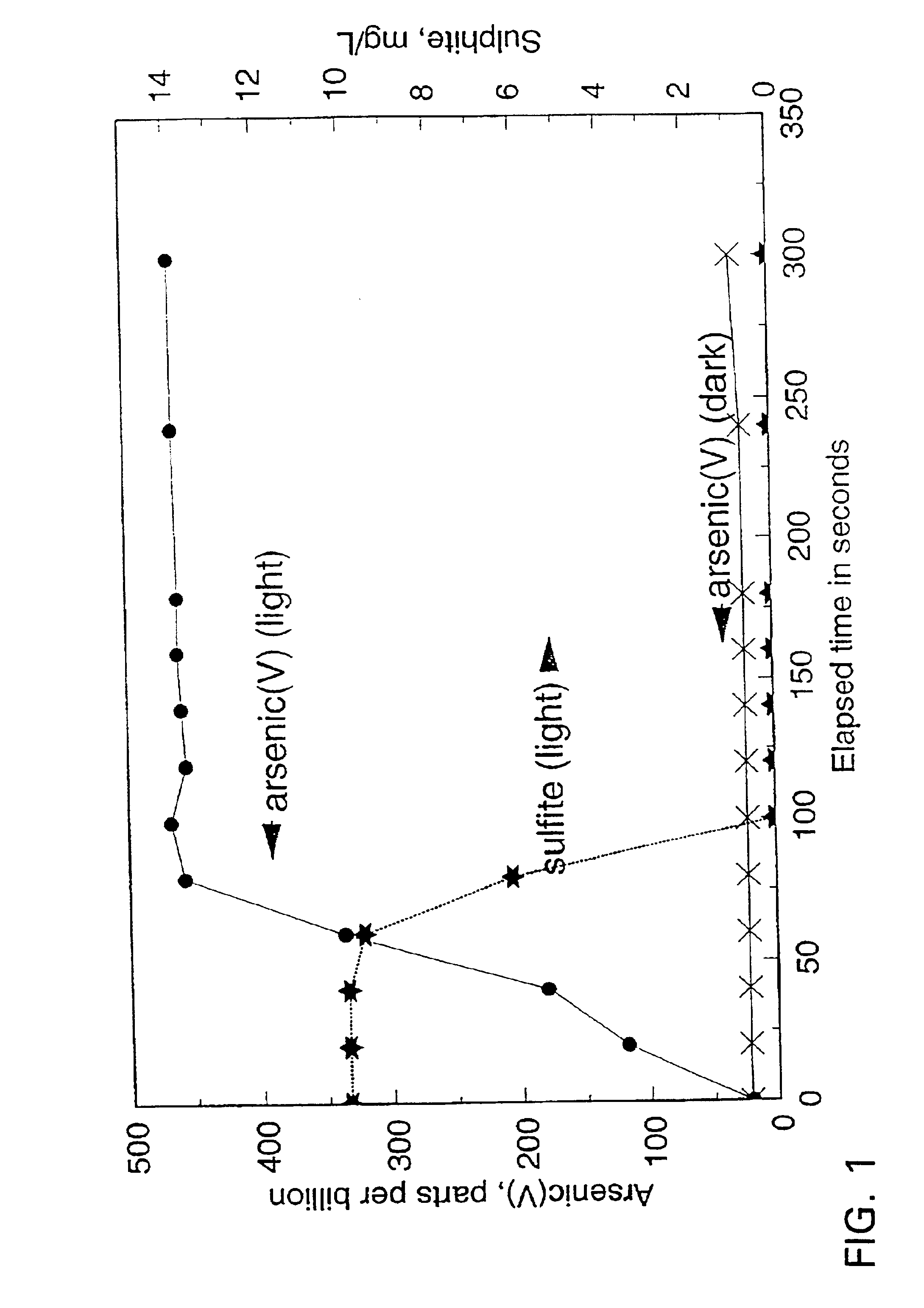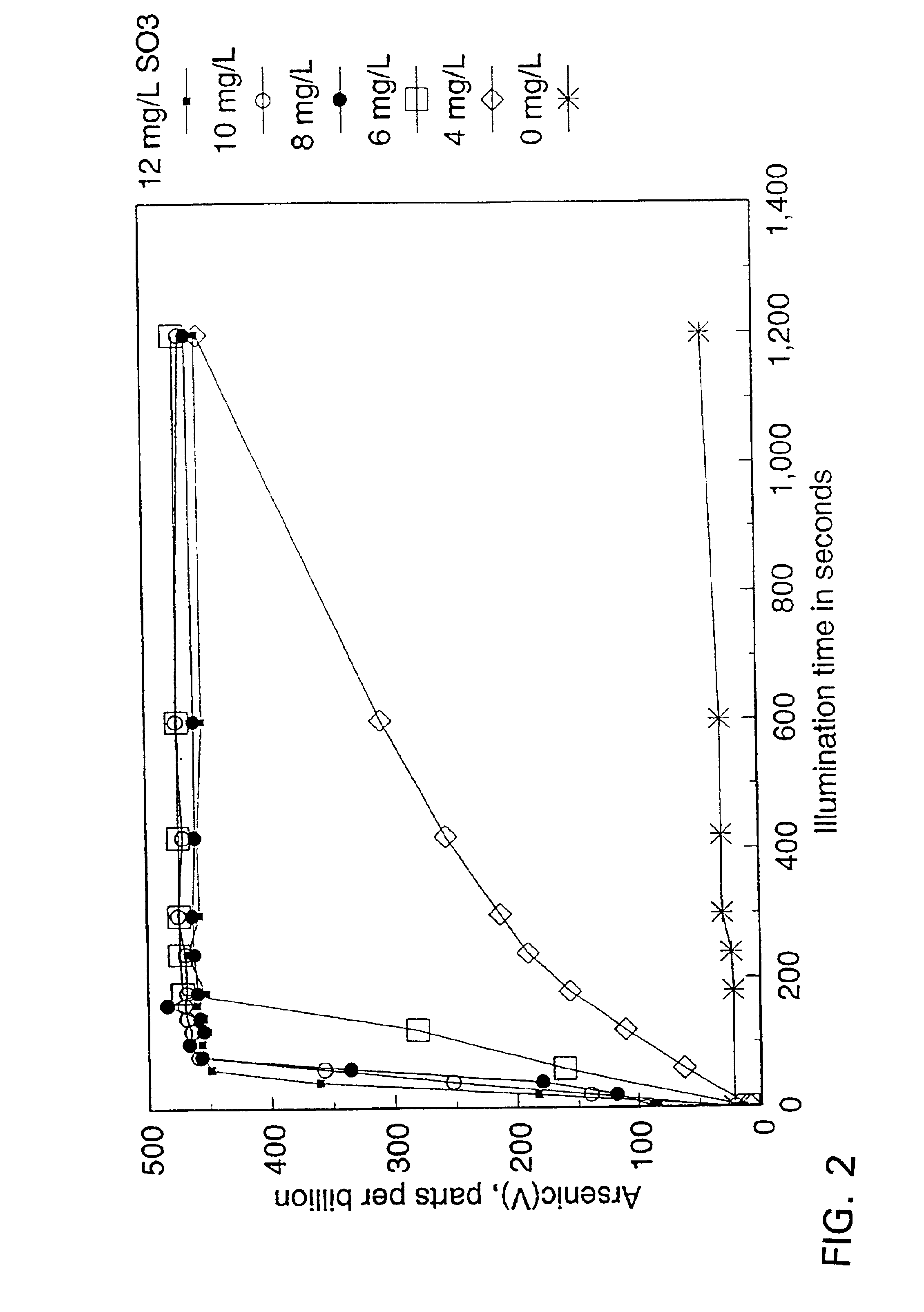Photo-assisted oxidation of inorganic species in aqueous solutions
a technology of inorganic species and aqueous solutions, applied in the direction of water/sewage treatment by oxidation, disinfection, separation processes, etc., can solve the problems of discolouring water, soiling of clothes and staining of household fixtures, and contamination of drinking water supplies
- Summary
- Abstract
- Description
- Claims
- Application Information
AI Technical Summary
Benefits of technology
Problems solved by technology
Method used
Image
Examples
examples
Non-limiting examples will now be described.
Photo-Oxidation of Dissolved Arsenic(III)
[0041]A reaction mixture (1700 mL) containing 470 μg / L As(III) (typical concentrations in ground water in areas where arsenic is leached from the naturally occurring arsenic-containing minerals) and 10 mg / L of dissolved sulphite (SO32−) was prepared as follows: the sulphite stock solution was prepared by dissolving sodium sulphite salt in demineralised water; the arsenious acid (As(III)) solution was obtained by dissolving arsenic trioxide in warm, demineralised water. The pH of the reaction mixture was adjusted to 9 with the addition of sodium carbonate (because groundwaters typically have significant carbonate alkalinity). The solution was then aerated by the injection of fine bubbles of air.
[0042]In the absence of UV illumination, no significant oxidation of As(III) was observed (FIG. 1). When a 15 W low pressure mercury lamp was switched on to illuminate the reaction mixture, the oxidation of As...
PUM
| Property | Measurement | Unit |
|---|---|---|
| Partial pressure | aaaaa | aaaaa |
| Wavelength | aaaaa | aaaaa |
Abstract
Description
Claims
Application Information
 Login to View More
Login to View More - R&D
- Intellectual Property
- Life Sciences
- Materials
- Tech Scout
- Unparalleled Data Quality
- Higher Quality Content
- 60% Fewer Hallucinations
Browse by: Latest US Patents, China's latest patents, Technical Efficacy Thesaurus, Application Domain, Technology Topic, Popular Technical Reports.
© 2025 PatSnap. All rights reserved.Legal|Privacy policy|Modern Slavery Act Transparency Statement|Sitemap|About US| Contact US: help@patsnap.com



